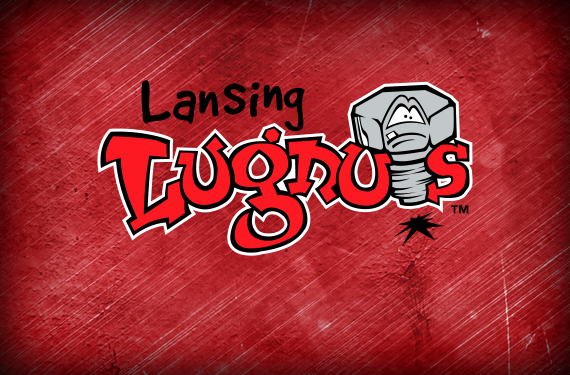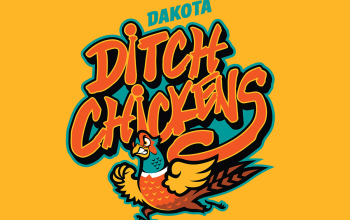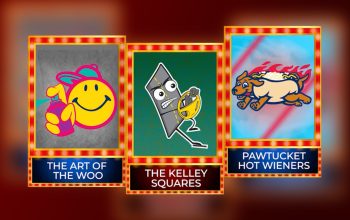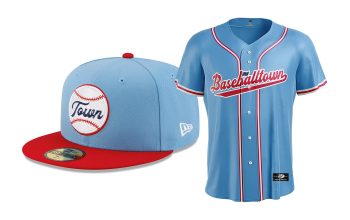Lansing, Michigan, is known for being an industrial center, home for more than 100 years to Oldsmobile, which was founded as Olds Motor Vehicle Company in 1897 and produced more than 14 million cars at its Lansing factory before production ceased in 2004. The state capital, Lansing is located in mid-Michigan, or for those familiar with local geography, right on the ball of the thumb of the mitten.
Even after the closing of Oldsmobile’s doors and recent economic struggles that have hit Michigan particularly hard, the city of Lansing still strongly identifies with its industrial past. So when a single-A Midwest League baseball team moved to the city before the 1996 season, the inspiration for its new name was easy to spot.
“The automotive industry, pure and simple,” said Jesse Goldberg-Strassler, the team’s radio broadcaster and author of the book The Baseball Thesaurus. “It is the history of Michigan and it’s the history based right in Lansing dealing with the automotive industry.”
And what, precisely, is a lugnut and what does it have to do with the automotive industry? “Lugnuts are what keep your tires on your car,” said Goldberg-Strassler.
 From their debut, the Lansing Lugnuts were so tied to the automotive industry that their stadium, now Cooley Law School Stadium, was initially called Oldsmobile Park. Fans of the team were so taken with the name that they permanently altered the city’s skyline.
From their debut, the Lansing Lugnuts were so tied to the automotive industry that their stadium, now Cooley Law School Stadium, was initially called Oldsmobile Park. Fans of the team were so taken with the name that they permanently altered the city’s skyline.
“We’re located directly downtown, and right across the street, catty-corner … there’s a smokestack, which I believe belongs to the Lansing Board of Water and Light,” Goldberg-Strassler said. “And in 1996, the inaugural season, the booster club for the Lansing Lugnuts paid to have an enormous lugnut placed atop. So if you come, you’re like, ‘There’s the biggest lugnut I’ve ever seen.’”
(The photo here is via Benjamin Hill of MiLB.com, who points out that the Lugnuts’ logo is technically a bolt.)
The logo itself features Luggy the Lugnut, who can best be described as dizzy. I asked Goldberg-Strassler whether the team incorporates a lot of spinning-related activities into between-inning entertainment. He said they do not, except for the dizzy bat races, which every team does. I think this is a missed opportunity for the Lugnuts, because while a lot of teams have friendly, cartoonish logos, the Lugnuts are the only team I can think of where the mascot looks as though he might be about to be physically ill.
The non-threatening logo is part of the team’s approach the minor league baseball experience. “We don’t need to scare anybody,” Goldberg-Strassler said. “If you name your team the Lugnuts, you have that great, goofy Luggy the Lugnut logo. It appeals to all ages. There’s just this idea, look, you come here, you’re going to have a good time.”
 The team is about to celebrate its 20th year—the new anniversary logo at right, featuring Michigan’s capitol, is currently the team’s Facebook avatar. In their two decades, the Lugnuts’ identity has remained relatively unchanged, with only minimal changes along the way.
The team is about to celebrate its 20th year—the new anniversary logo at right, featuring Michigan’s capitol, is currently the team’s Facebook avatar. In their two decades, the Lugnuts’ identity has remained relatively unchanged, with only minimal changes along the way.
“Over the years, heck yeah, the font might be updated, or jerseys might be changed a little bit,” Goldberg-Strassler said. “The logo did receive a change, I believe it was in 2004, in terms of the L, which was a very block L, suddenly became a much more fun L.” (The original version is on the left above, the current one on the right.)
But the name itself? “The name will not be changed,” Goldberg-Strassler said. “The name is a favorite. We’re a proud partner with the Toronto Blue Jays, but we’re not going to become the Lansing Blue Jays.”
The Lugnuts were one of the early adopters in the current wave of wacky minor league nicknames. While some give the Lugnuts credit for helping to usher in the current logo Renaissance, Goldberg-Strassler sees the team as part of a long progression of baseball entertainment that traces back to early personalities like Germany Schaefer and Max Patkin—”people who want to make sure that people who come to the ballpark are engaged and entertained”—and continues today with new and crazier minor league team names each year.
As with recent teams who announce new identities, the reaction to the Lugnuts was predictably mixed when it was first unveiled.
“I think it’s the same sort of reaction that we saw last year with the Akron RubberDucks or the El Paso Chihuahuas or this year with the Daytona Tortugas, where everyone goes, ‘Whoa whoa whoa!’” Goldberg-Strassler said. “And then you give it two years, three years, and now something else has replaced it, and you just take it for granted, and you go, ‘Okay, so they’re the Hillsboro Hops, they’re named after beer.’”
While the Lugnuts have been around for two decades, an eternity for a minor league baseball team these days, they still appear on the list of the top 25 teams in terms of merchandise sales each year, holding their own against an army of newcomers. Goldberg-Strassler attributes this to the logo’s timelessness. “One thing I’m proud of, I don’t feel that the nickname has been dated over time,” he said. “I’m glad that Lansing Lugnuts are still as fresh as ever.”
The Lugnuts have accomplished exactly what they set out to accomplish with their identity. Their team name pays homage to an important aspect of their local community while still being light and fun. Even after just 20 years, they’re firmly entrenched not just in their own community, but as one of the patriarchs in the current movement of wacky, family-friendly minor league logos.

















